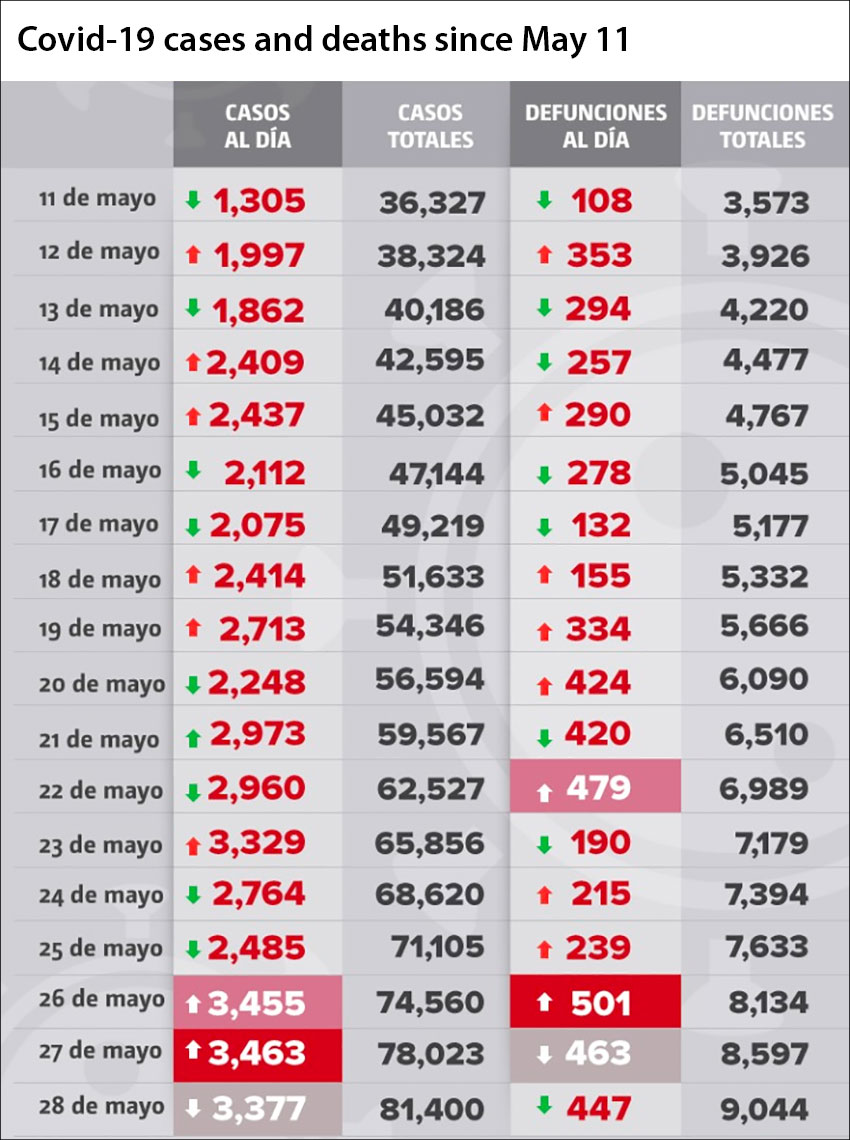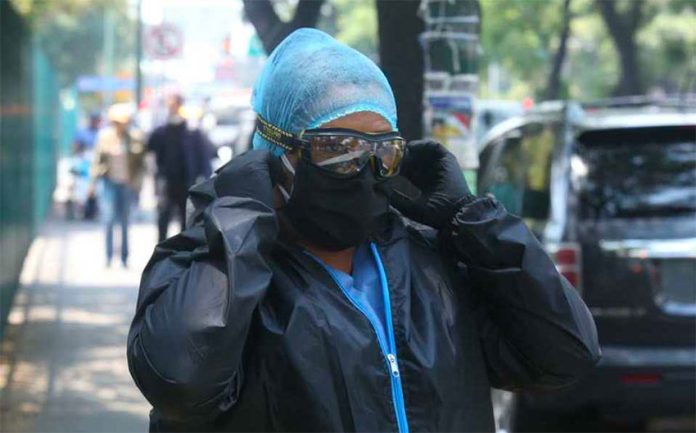Mexico’s coronavirus case tally rose above 80,000 on Thursday and deaths passed 9,000 as researchers from the National Autonomous University (UNAM) warned that the pandemic is far from being under control.
The federal Health Ministry reported 3,377 new Covid-19 cases at a press briefing Thursday night, increasing the total number of accumulated cases since the start of the pandemic to 81,400.
It also reported 447 additional coronavirus-related deaths, lifting the official death toll to 9,044. Deputy Health Minister Hugo López-Gatell said that an additional 783 fatalities are suspected of having been caused by Covid-19 but have not yet been confirmed.
He said that 254,794 people have now been tested for the disease and that there are currently 36,131 suspected cases across the country.
Of the total number of confirmed cases, 16,315 are considered active, an increase of 723 compared to Wednesday.
Just under a quarter of the active cases – 3,972 – are in Mexico City while México state has the second largest active outbreak, with 2,202 cases.
The next biggest active outbreaks are in Baja California, Tabasco, Veracruz, Puebla and Sinaloa. All five states have more than 500 active cases.
Only three states – Colima, Zacatecas and Baja California Sur – currently have less than 100 active cases.
Mexico City also has the highest Covid-19 death toll in the country, with an additional 114 fatalities reported on Thursday, increasing the capital’s total to 2,427.
México state is the only other state with a four-figure death toll, having now recorded 1,046 fatalities.
More than 800 people have lost their lives to Covid-19 in Baja California while three states – Tabasco, Veracruz and Sinaloa – have death tolls in excess of 400.

Based on confirmed cases and deaths, Mexico’s fatality rate is currently 11.1, well above the global rate of 6.2.
Mexico’s low testing rate means that the official case tally only represents a fraction of the real size of the pandemic while it is widely believed that Covid-19 deaths are being underreported, especially in Mexico City.
Hospitals in some cities, such as Mexico City, Tijuana and Acapulco, have come under intense pressure due to the large influx of coronavirus patients but data presented by the Health Ministry on Thursday night showed that the the health system still has significant capacity at a national level to accept new admissions.
Only 40% of general care beds set aside for the treatment of patients with serious respiratory symptoms are currently occupied while 35% of those with ventilators are in use.
The federal government’s national social distancing initiative will officially conclude on Saturday just over two months after it began but the risk of infection remains high, according to a map presented by López-Gatell on Friday morning.
He presented a map at the president’s regular press conference that showed that every state in the country except Zacatecas is currently considered to be at the maximum “red light” risk of infection. Zacatecas, which currently has 59 active cases, is considered a high risk “orange light” state.
“This evaluation was made on May 28, it’s the most up-to-date and it is what will enter into force on Monday, June 1,” López-Gatell said.
Consequently, Zacatecas will be the only state permitted to ease restrictions on Monday in accordance with the government’s color coded stoplight system.
As Mexico prepares to shift to coronavirus mitigation restrictions on a state by state rather than national basis, UNAM researchers warned that the first wave of infections in the pandemic is far from under control.
A report published by the Faculty of Medicine’s department of public health said the situation in Mexico is comparable to that in the United States, Brazil and Russia, which have the highest number of Covid-19 cases in the world.
The report said that the pandemic is still in a growth phase and that Mexico should be implementing stricter measures to slow it.
Researcher Abril Violeta Muñoz Torres said the Mexican population is particularly susceptible to Covid-19 because of the high rates of diabetes and obesity.
She also said that studies have found that the fatality rate is higher among Covid-19 patients who were admitted to IMSS, ISSSTE and state-run public hospitals than those who received treatment at private health facilities as well as those operated by the army, navy, national health institutes and the state oil company.
Source: La Jornada (sp), Milenio (sp), El Financiero (sp)
